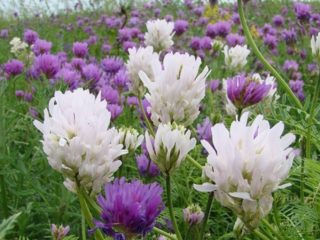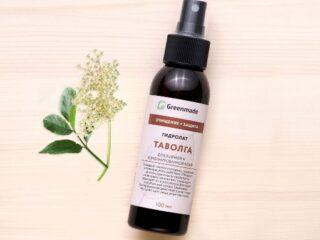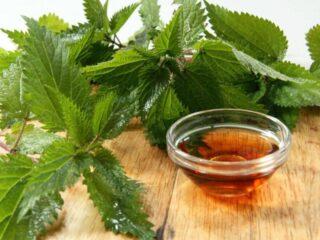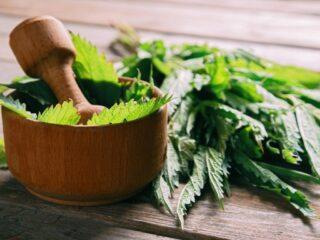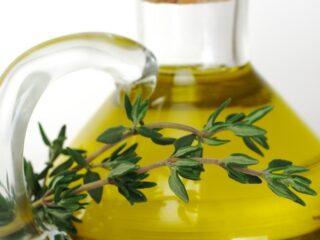Content
Oak sage is a beautiful plant with numerous valuable properties. Before planting a crop on a site, you need to study its basic care requirements.
Description of oak sage
Oak sage (Salvia nemorosa) is a perennial plant of the Lamiaceae family. It has straight stems, branched at the top. The leaves of the plant are oblong, pointed at the ends, jagged along the edge.
You can find oak sage in Central Europe, in the central part of Russia and in the foothills of Crimea. The perennial grows along the edges and in dry meadows, in steppes and on rocky slopes.
Height of sage
The height of the perennial depends on the variety. The stems reach an average of 30-90 cm above the ground. In the lower part, the shoots of the plant become woody over time, while at the top they remain green, grassy. The ends of the stems often freeze in winter, but with the arrival of spring they are quickly restored.
Flowering period of oak sage
The decorative period of the perennial begins in June. The buds of the plant are dark purple, up to 1.5 cm long, collected in simple false whorls of 4-6 pieces. The latter, in turn, form long spike-shaped inflorescences up to 40 cm long.
The decorative period of oak sage lasts about two months until August. Closer to autumn, the fruits ripen - triangular spherical nuts with a dark brown shell.
Winter hardiness of oak sage
The frost resistance of oak sage is not too great - up to -28 °C. The plant develops well in the southern regions, but in the middle zone it requires careful insulation for the winter. In severe frosts and poor snow cover, it may freeze out partially or entirely.
The best varieties of oak sage
The flowering time of oak sage and other features depend on the specific variety. It is customary to distinguish several popular varieties of culture.
Ostfritsland
A medium-sized perennial rises up to 40 cm above the ground. It has branched shoots, the leaves of the plant are slightly wrinkled. The flowers are purple or bluish, of standard size.
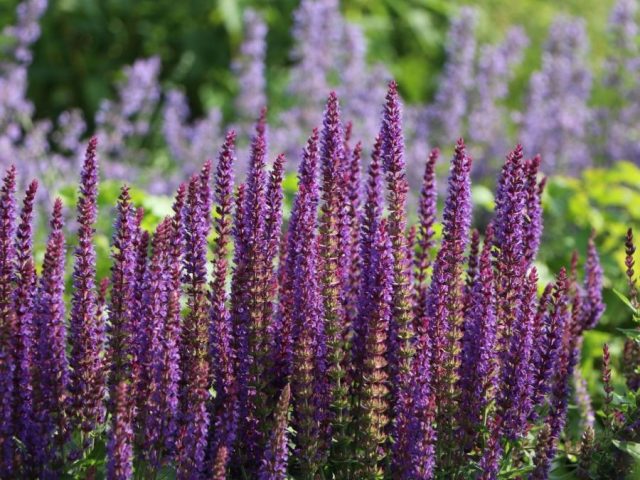
The Ostfriesland variety continues to bloom all summer long
Mainacht
The perennial variety grows up to 60 cm above the ground. It blooms with violet-blue lush tassels and exudes a pleasant aroma.
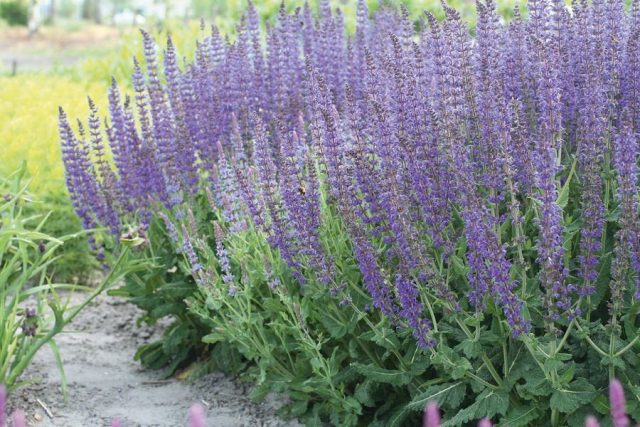
Flowering of the Mainakht variety lasts from July to the end of August
Blauhugel
At the beginning of summer, oak sage bears numerous buds in lush spikelets and looks very much like lavender. The flowers of the plant are purple and look beautiful against the background of gray-green leaves. The decorative period occurs in June and July.
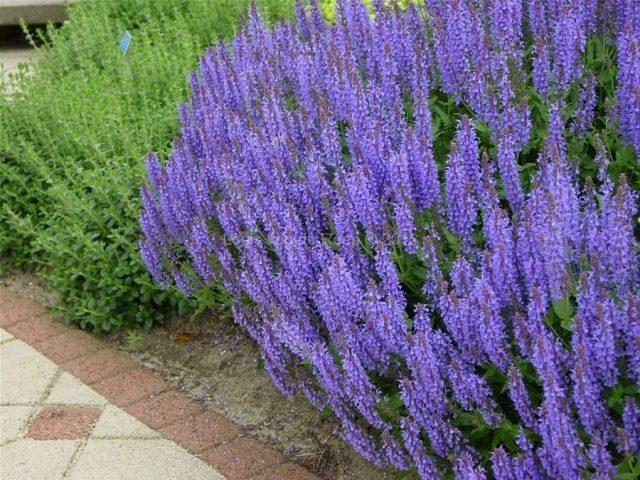
Variety Blauhügel reaches 50 cm in height
Caradonna
The variety is tall, reaching 80 cm above the ground. Blooms with lush purple buds. Flowering continues for a very long time - from the beginning of summer until the first frost.
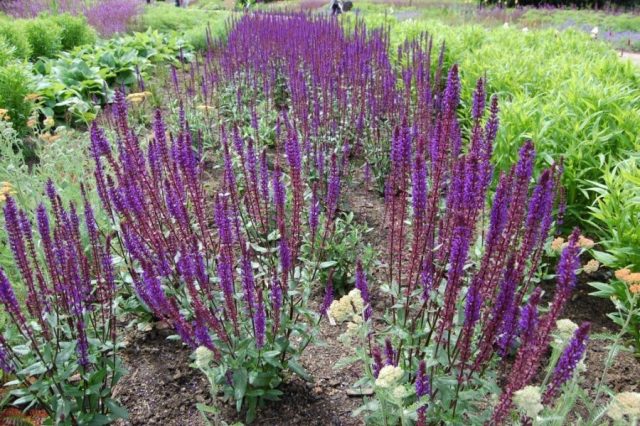
The high variety Caradonna is used to divide the site into zones
New Dimension Blue
A miniature variety of oak sage blooms with blue-violet bright buds. Prefers dry, lime-rich soils and grows well in sunny areas.
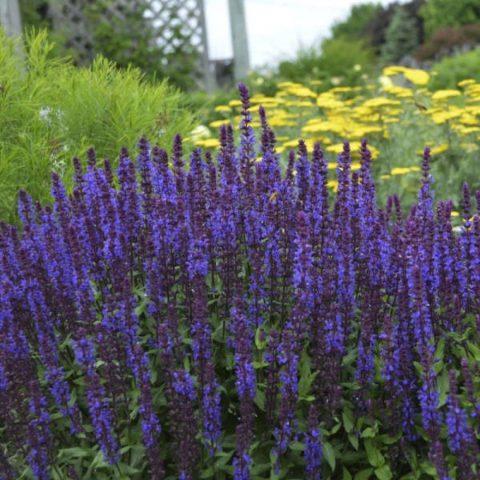
New Dimension Blue rises only 25 cm above the ground
Rose Queen
The perennial bears lilac-pink sessile flowers collected in candles up to 40 cm long. The stems themselves rise above the ground up to 60 cm. During flowering, oak sage looks as decorative as possible, but even after withering it retains its attractiveness thanks to its large bluish leaves with slight pubescence.
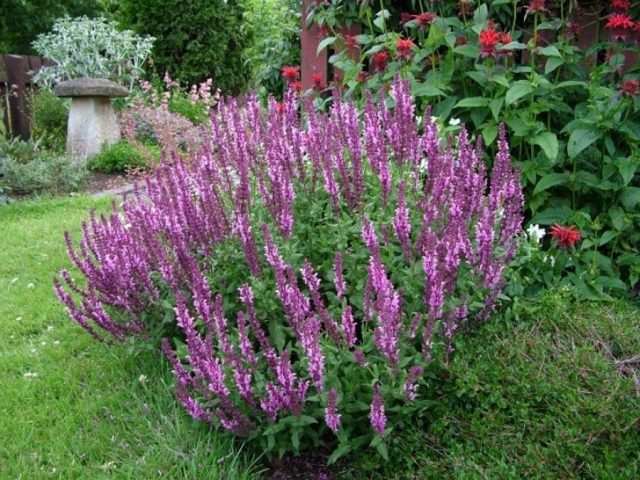
Rose Queen blooms from late May to September
Useful properties of oak sage
The benefits and harms of oak sage are of interest to traditional medicine. The plant is used to prepare medicinal infusions and decoctions. Perennial-based products:
- improve the functioning of the digestive system and speed up metabolism;
- help with excessive sweating;
- have a beneficial effect on the reproductive system in women;
- fight inflammation and infectious processes;
- eliminate skin irritations;
- promote healing of wounds and cuts;
- improve the condition of the gums and help cope with the symptoms of stomatitis and periodontal disease;
- strengthen blood vessels and normalize heart function;
- protect against the development of diseases of the nervous system;
- promote expectoration when coughing;
- improve appetite and relieve stomach pain.
The perennial composition includes organic acids, triterpenes, essential oils and flavonoids, as well as mineral salts. Decoctions based on the plant prevent the development of vitamin deficiency and anemia. The aromatic herb is used in cosmetology - extracts are found in hygiene products and perfumes.
Application of oak sage
Based on the decorative perennial, products are prepared for external and internal use. When used in moderation according to prescriptions, they have a strengthening effect on the body.
For furunculosis
The antiseptic properties of oak sage help clear the skin of rashes and prevent the recurrence of boils. Traditional medicine recommends using this remedy:
- Dry leaves and stems of the plant are crushed in a volume of 15 g.
- Pour a glass of boiling water over the raw material.
- Leave covered for an hour.
- After the period has passed, filter.
The infusion is used to wipe problem areas of the skin and for compresses up to five times a day.
For sore throat
The anti-inflammatory qualities of oak sage eliminate pain and make it easier to swallow during sore throat. The healing infusion is prepared in this way:
- Pour 30 g of dry grass into a thermos.
- Pour in 250 ml of hot water.
- Leave for an hour.
- Filter the sediment through gauze.
The infusion is used to gargle and rinse the mouth. The product should be used three times a day.

Before using for sore throat, the infusion of oak sage should be heated to a warm temperature.
How to grow oak sage
Growing oak sage from seeds allows you to get a beautiful and useful perennial at home. With proper care, the crop quickly sprouts, and it can be sown in two ways.
Oak sage seedlings
It is recommended to sow oak sage for seedlings at the end of March or early April. Seeds are used both own and purchased, the planting algorithm remains the same. It looks like this:
- A nutrient substrate with the addition of humus, sand and peat is poured into a shallow box.
- Moisten the soil and spread the seeds over its surface.
- Sprinkle the material on top with the remaining soil and spray with lukewarm water.
- Place the box under the film in a moderately lit corner.
When planted correctly, the seeds sprout after three weeks. Until the final warming, the seedlings are kept on the windowsill, and then moved into open ground in the middle or at the end of May.
Before planting, oak sage seeds need to be stratified in the refrigerator for at least two weeks. This will speed up their germination and strengthen the culture’s immunity.
Planting in open ground
You can sow oak sage seeds not only for seedlings, but also directly into the ground. The procedure is usually carried out before winter in October or November. In this case, stratification of oak sage seeds occurs naturally. The selected area is dug up in early autumn and fertilized with humus and peat.The soil for oak sage should be loose and moderately nutritious, with neutral acidity.
Direct planting of the material is carried out as follows:
- Make shallow trenches or individual holes in the soil.
- The seeds are laid out and sprinkled with clean river sand and a layer of humus.
- Moisturize generously using a spray bottle.
- They are insulated for the winter with dry leaves and a layer of spruce branches.
With the onset of spring, oak sage gives its first shoots. Typically, sprouts appear at the end of May after the soil has warmed to 15-20 °C.

The disadvantage of winter sowing of sage is low germination - only about 50% of the total seed volume
Rules of care
After planting oak sage seeds for seedlings and obtaining seedlings, it is necessary to provide the crop with proper care. Caring for perennials on the site comes down to several activities:
- Watering. The crop easily tolerates short droughts, but during periods of prolonged lack of precipitation it needs moisture. Water the perennial with lukewarm, settled water, but do not allow the soil to become waterlogged.
- Feeding. In spring, oak sage in a flower bed can be fertilized with rotted manure or minerals containing nitrogen. In summer and autumn, the crop does not need fertilizing.
- Trimming. Every year it is recommended to trim the shoots of the plant at the tops - this stimulates the appearance of lateral shoots. When cutting, approximately 1/3 of the total length is removed; the woody part of the stems is not touched.
With the onset of autumn, oak sage begins to prepare for the cold weather. The shoots are cut to 10-15 cm, after which the plant is mulched with humus or a thick layer of dry foliage. After the first frost, the perennial is additionally insulated with spruce branches.
Reproduction of oak sage
There are several ways to propagate oak sage in your area. The plant responds well to propagation by layering and cuttings, as well as division.
Cuttings
In addition to sowing oak sage for seedlings, cuttings can be used to increase the population of the crop. At the beginning of summer, several stems with four buds on each are cut from an adult bush and planted in light, loose soil with the addition of humus and perlite.
The cuttings are moistened and covered with mini-greenhouses made from cut bottles. After about a month, the shoots will form strong roots and can be transplanted to a permanent location.
Division
It is recommended to divide mature overgrown bushes from time to time. The procedure is performed in the spring after the plant has formed young shoots. Oak sage is carefully dug out of the ground and its rhizome is divided into pieces with your hands or a sharpened shovel.
The resulting plants are immediately transferred to the prepared holes. The roots should first be disinfected in a weak solution of potassium permanganate so that they do not begin to rot.
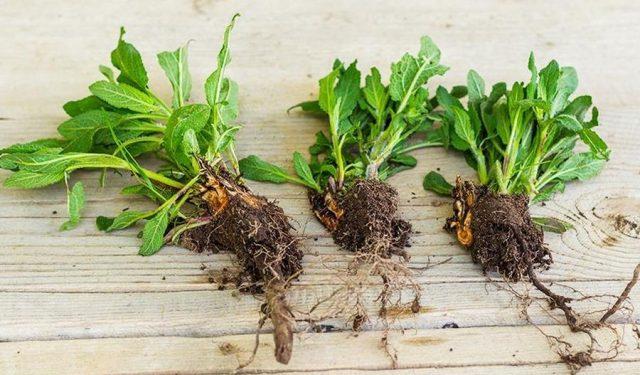
It is recommended to divide oak sage on the site once every 5-6 years
Layerings
The young perennial reproduces well by layering. In early June, one of the flexible green shoots is bent to the ground and secured with wire to prevent it from straightening. The middle part of the layering is covered with soil, and the top is left above the surface.
With regular watering, the shoot will produce its own roots in about two months. Already in the fall it can be separated from the bush and transplanted into an individual hole.
Oak sage in landscape design
Due to its compact size, oak sage is widely used in landscape design. Most often it is planted in separate flower beds or in the vicinity of asters and echinacea, astrantia and burnet, yarrow and saplings. The beauty of a flowering perennial is well emphasized by discreet cereals.
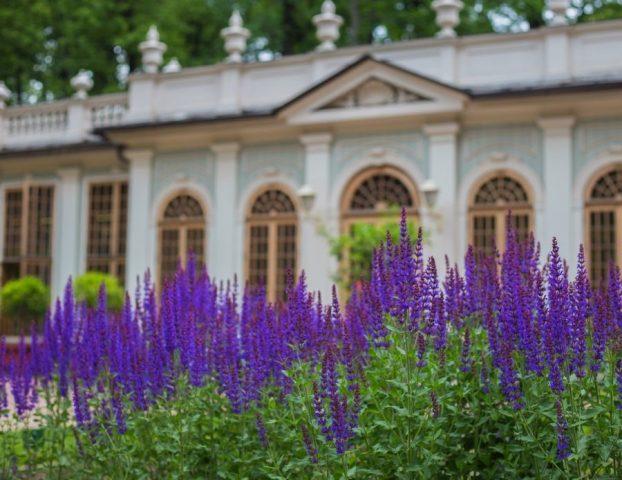
Tall sage can be used to form colorful hedges
The crop can be planted in rockeries and on slopes, as part of alpine gardens and in borders. It should be taken into account that the root system of the perennial is widely branched. It should be placed at some distance from neighboring crops to prevent competition for moisture and nutrients.
Conclusion
Oak sage is a beautiful crop with simple care requirements. When growing, it is enough to water the perennial from time to time and feed it with organic matter in the spring.
Reviews of oak sage
